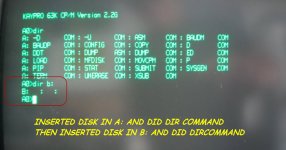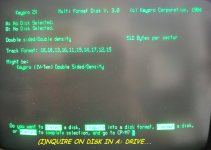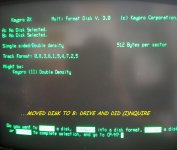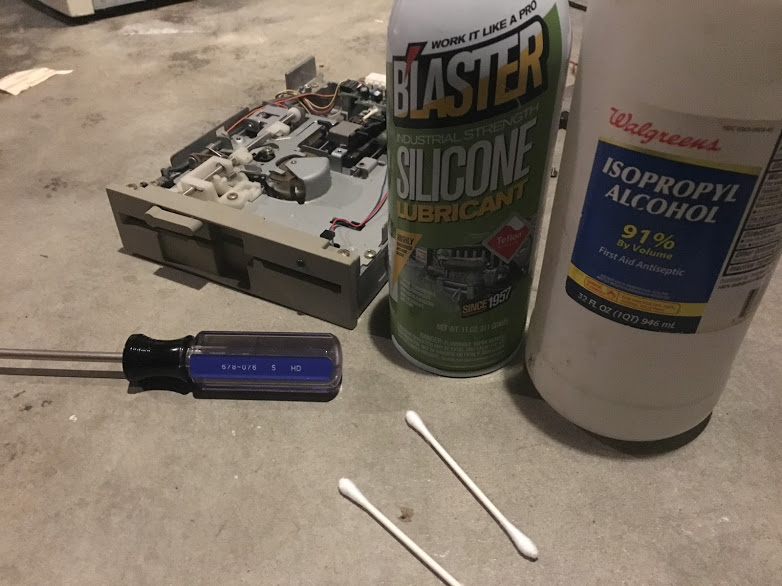k6whp
Experienced Member
- Joined
- Mar 1, 2014
- Messages
- 71
I am returning after a time and unsure if this thread will be moderated for the ten posts (not that it matters) so I will state problem as completely as possible and wait for some responses to digest.
Background:
I have two Kaypro 2X units and one Kaypro 1 unit. The Kaypro 1 unit is functional but, alas, the 2X units have disk drive problems. All of these units were stored in a clean, cool, dry moderate environment.
Unit #1 (as I shall designate it) I have owned since essentially 1984 and used up until 1987. About three years ago, I got it out and noted it had problems. Succinctly, the video was distorted and it would not boot from the A: drive. Eventually, the A: drive "woke up" and it booted. The distorted video was traced down to a couple of bad caps on the video board. These were replaced and the video restored. The unit was placed back in storage until it was pulled out last week (early March 2022) and tested. Now the A: drive will not boot despite being fed the "original" Kaypro master disks or its CP/M disk copies I made to work with it three years ago and I have tested on Unit #2.
Unit #2 (similarly designated) boots from drive A: but drive B: has gradually "faded" into malfunction. That is, in copying some diskettes for a friend, I noticed a grinding sound like the drive was laboring. Eventually, the drive became in reliable --e.g. failed to work.
Both of the 2X units have the Epson SD-521 drives in them.
Below are some pictures of the two units marked appropriately.
Objectives
I should like to:
(1) Revive the two 2X machines such that the A: drive boots on #1 and that the B: drive functions correctly. Any guidance pointing to a thread or source onhow to clean, adjust, and calibrate the SD-521 drives appreciated. Have searched but only found fragmentary info.
(2) Failing that I would like to see if I can implement a USB floppy controller for drive A: and use the two good drives as B: drives. Either the HCX or GoTek controllers would be satisfactory. I note that the
(3) Ultimately, I would like to convert the Kaypro 1 to use a USB floppy disk controller as well.
(4) BUT BEFORE I DO ANY OF THAT, I do not want to pile a heap of stuff on you all. I have been wading through some of the threads here and elsewhere and, if you can point me to any sources of info where I can educate myself, it would be appreciated. With references like that, I can do the research and come back here to ask "byte size" (Sorry) questions and add to my knowledge.
Mainly just appreciate any guidance to get me off the ground. Much thanks in advance.
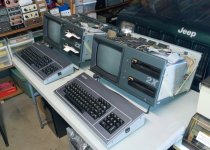

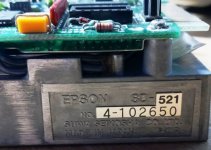
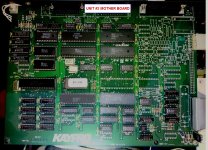
Background:
I have two Kaypro 2X units and one Kaypro 1 unit. The Kaypro 1 unit is functional but, alas, the 2X units have disk drive problems. All of these units were stored in a clean, cool, dry moderate environment.
Unit #1 (as I shall designate it) I have owned since essentially 1984 and used up until 1987. About three years ago, I got it out and noted it had problems. Succinctly, the video was distorted and it would not boot from the A: drive. Eventually, the A: drive "woke up" and it booted. The distorted video was traced down to a couple of bad caps on the video board. These were replaced and the video restored. The unit was placed back in storage until it was pulled out last week (early March 2022) and tested. Now the A: drive will not boot despite being fed the "original" Kaypro master disks or its CP/M disk copies I made to work with it three years ago and I have tested on Unit #2.
Unit #2 (similarly designated) boots from drive A: but drive B: has gradually "faded" into malfunction. That is, in copying some diskettes for a friend, I noticed a grinding sound like the drive was laboring. Eventually, the drive became in reliable --e.g. failed to work.
Both of the 2X units have the Epson SD-521 drives in them.
Below are some pictures of the two units marked appropriately.
Objectives
I should like to:
(1) Revive the two 2X machines such that the A: drive boots on #1 and that the B: drive functions correctly. Any guidance pointing to a thread or source onhow to clean, adjust, and calibrate the SD-521 drives appreciated. Have searched but only found fragmentary info.
(2) Failing that I would like to see if I can implement a USB floppy controller for drive A: and use the two good drives as B: drives. Either the HCX or GoTek controllers would be satisfactory. I note that the
(3) Ultimately, I would like to convert the Kaypro 1 to use a USB floppy disk controller as well.
(4) BUT BEFORE I DO ANY OF THAT, I do not want to pile a heap of stuff on you all. I have been wading through some of the threads here and elsewhere and, if you can point me to any sources of info where I can educate myself, it would be appreciated. With references like that, I can do the research and come back here to ask "byte size" (Sorry) questions and add to my knowledge.
Mainly just appreciate any guidance to get me off the ground. Much thanks in advance.





